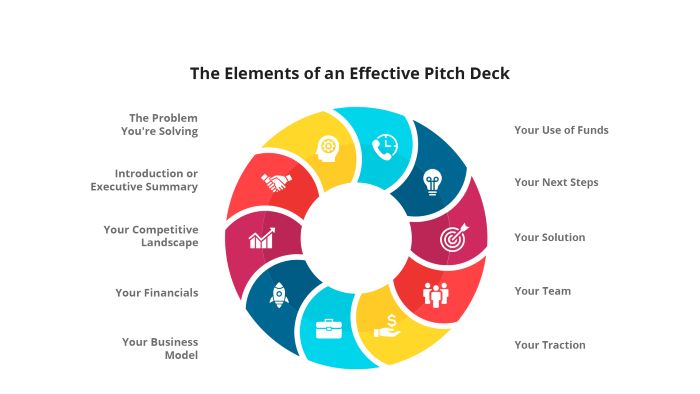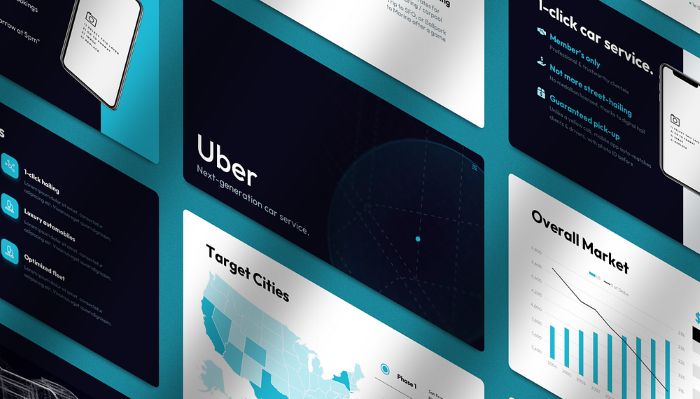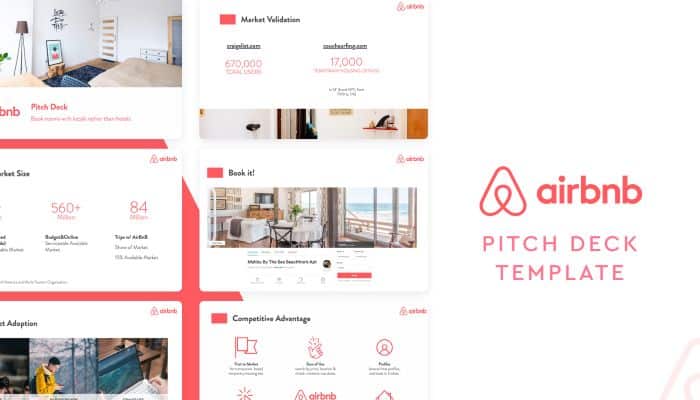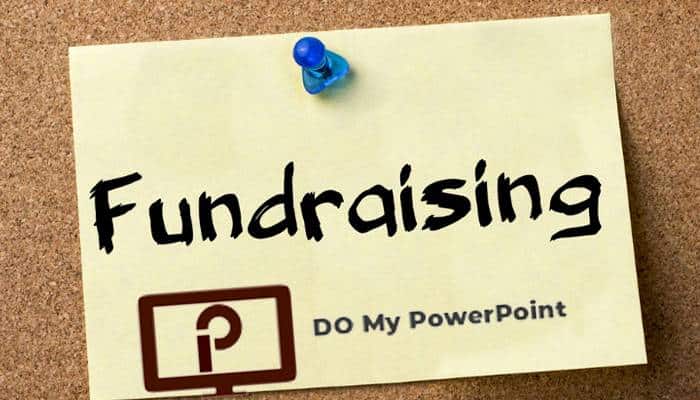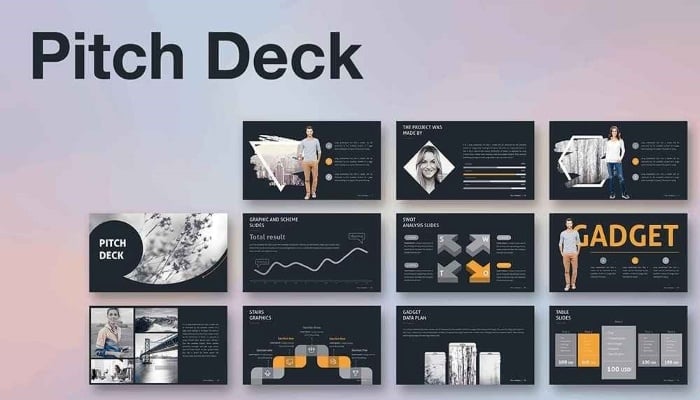Answer to the question What Are Pitch Decks?
There is a moment when entrepreneurs are standing in front of potential investors with only minutes to prove that their business deserves funding. In such a situation, a pitch deck becomes their most powerful tool.
Creating a compelling pitch deck is daunting for many, especially when they are not even sure what that is or what it contains. A pitch deck is actually a focused presentation that offers an elaborate overview of your business plan, market chances, and potential growth to attract investors, partners, or clients.
The following article will walk you through pitch decks-from the mere definition up to all that makes them succeed.
Our team at Do My PowerPoint is ready to elevate your presentations with our expert presentation services. Get high-quality designs, affordable rates, and fast delivery. Contact us today for impressive and impactful presentations! Build your business story into an attention-grabbing, results delivering presentation.
What is a Pitch Deck?
What is a pitch deck? This is probably one of the most thrown-around terms you have heard in business circles. A pitch deck is a short, visual presentation that clearly and coherently communicates an overview of your business plan, products, services, and growth potential.
Think of it as the story of your business in slide format. From startup founders to 10-year-old entrepreneurs, visual stories are used through pitch decks to capture the interest of investors, partners, or clients. In its entirety, it usually fits in 10-12 slides and takes about 15 minutes to present, including time for questions. A pitch deck helps you:
• Get venture capitalists and angel investors interested
• Land follow-up meetings for deeper talks
• Show your stuff at startup competitions and demo days
• Make partnership talks easier
• Share your business vision clearly
The key features of a pitch deck include:
| Aspect | Description |
| Format | Visual presentation using PowerPoint or similar software |
| Length | 10-20 slides typically |
| Content Style | Brief, informative, and visually appealing |
| Main Goal | Secure next meeting or funding chance |
| Target Audience | Investors, partners, or potential clients |
A pitch deck is not supposed to be a lesson. You should provide just enough information to make your audience understand your vision and business potential. The main goal is not to get funding right away; it’s to make it to the next meeting.
A great pitch deck narrates the story of your company in an appealing storyline with your business model, market chances, product demos, and data visualization. Note that investors might have particular interests in what they want to see in your pitch deck; however, some of the more fundamental elements should be included.
Pitch decks are incredibly flexible. While most people use them to raise funds from venture capitalists, they work great in other situations too. Some business owners create simpler versions to show customers their products and benefits. Others use them for partnership talks or startup competitions.
Your pitch deck should be far from a sleeping pill; it should tell an awesome story. Think of your pitch deck as the film trailer for your business that makes people to want more.
Our team at Do My PowerPoint takes business ideas and turns them into eye-catching visual stories that investors love. From getting ready for your very first investor meeting to tightening up your current pitch deck, we can help drive your vision and potential by offering a pitch deck design service that blows your mind.
Key Components of a Pitch Deck
Now, Let’s review the specific elements themselves that make up any great pitch deck:
A typical, structured pitch deck has 10-20 slides. Each of those slides tells something different about your business story. Here is our complete breakdown of the core components:
Core Components Overview:
| Component | Purpose |
| Problem Statement | Identifies the market pain point |
| Solution | Demonstrates your unique approach |
| Market Analysis | Shows business potential |
| Product Overview | Expresses key benefits |
| Business Model | Explains revenue generation |
| Traction | Proves market validation |
| Team Introduction | Showcases expertise |
| Financial Projections | Details growth potential |
| Competition | Analyzes market position |
| Funding Requirements | Specifies funding needs |
Our attention remains focused on three high-priority aspects which investors really consider:
• Clear problem definition and market pain points
• Compelling solution with proven traction
• Strong team capabilities and execution potential
Problem-solution slides are the building blocks of your pitch deck. The starting should be with problem statements which your target audience can relate to; and then, to introduce your solution innovatively. For your market size slide, have credible sources, and keep your thinking in billions to showcase big potential.
Your competitive analysis needs special attention. Every business faces competition, and claiming otherwise raises red flags. We help you present this information strategically by highlighting your unique advantages while acknowledging market realities.
Financial projections are a story expressed through numbers. Some key metrics of this include:
1. Monthly Recurring Revenue (MRR)
2. Customer Acquisition Cost (CAC)
3. Burn Rate
4. Break-even Point
The team introduction slide is very important, and investors always invest in people, not ideas. We help you underline relevant experiences and achievements that shall make them understand why your team is the best bet to execute this vision.
Presentation is everything, much like the content would be. The best pitch decks strike a great balance between comprehensive information and engagement for the audience. We recommend preparing one slide per component and avoiding information overload per slide.
Types of Pitch Decks
Pitch decks are a dynamic storytelling mechanism whereby businesses communicate their vision, value proposition, and strategic potential to a wide range of professional landscapes. Understanding the detailed subtlety of various pitch deck types forms the bedrock for the creation of compelling narratives that connect with an audience and meet particular goals.
Investor Pitch Decks
Purpose
Investor pitch decks are much more than financial presentations; they are sophisticated narrative vehicles that transform entrepreneurial visions into tangible investment opportunities. These strategic documents represent a blueprint of business potential, constructed to capture the imagination and analytical views of sophisticated financial stakeholders.
Key Characteristics
• Comprehensive financial projections
• Detailed market opportunity analysis
• Strong emphasis on team capabilities
• Clear funding requirements
Target Audience
• Venture capitalists
• Angel investors
• Private equity firms
• Institutional investors
Use Cases
• Seed funding rounds
• Series A, B, and C funding
• Venture capital presentations
• Investment partnership discussions
Sales Pitch Decks
Purpose
The sales pitch decks are precision-designed and engineered communication tools, with the ability to fill in the wide gap between what your potential can achieve for your client and what it really requires. These presentations stand as highly dynamic storytelling platforms, enabling your complex value propositions to turn into impactful and actionable narratives.
Key Characteristics
• Problem-solution format
• Distinct product advantage
• Customers success stories or testimonials
• Competitive market pricing strategies
Target Audience
• Potential enterprise customers
• Small to medium business owners / decision-makers
• Enterprise procurement teams
• B2C products individual customers
Use Cases
• Product launch presentations
• Sales meetings
• Client proposal submissions
• Trade show demonstrations
Partnership Pitch Decks
Purpose
Partnership pitch decks represent sophisticated strategic documents engineered to establish symbiotic collaborative ecosystems. These presentations go beyond traditional business interactions, positioning potential partnerships as transformative opportunities for mutual growth and innovation.
Key Characteristics
• Collaborative value proposition
• Synergy analysis
• Shared goals and potential outcomes
• Complementary strengths highlight
Target Audience
• Potential strategic business partners
• Complementary service providers
• Cross-industry collaboration prospects
• Joint venture candidates
Use Cases
• Strategic alliance negotiations
• Co-marketing initiatives
• Technology integration discussions
• Supply chain partnership exploration
Comparative Analysis and Strategic Recommendations
| Pitch Deck Type | Primary Objective | Audience Focus | Key Metrics Emphasized |
| Investor | Secure Funding | Financial Stakeholders | ROI, Market Size, Growth Potential |
| Sales | Generate Revenue | Potential Customers | Product Benefits, Problem Solution |
| Partnership | Create Synergies | Potential Collaborators | Mutual Value, Strategic Alignment |
• Customize your pitch deck’s narrative and design to match the specific audience’s expectations
• Maintain a consistent brand voice and visual identity across different pitch deck types
• Continuously refine and update your presentation based on feedback and market dynamics
• Invest time in understanding your audience’s specific needs and interests
The art of creating target-oriented pitch decks helps an organization to effectively communicate its value proposition across diverse professional landscapes and can turn potential opportunity into tangible success.
How to create an Effective Pitch Deck
An effective pitch deck succeeds both on design and content quality. DoMyPowerPoint.com has helped many entrepreneurs create a compelling presentation and raise investments. Here are the leading strategies to develop a pitch deck that will help you achieve your goals.
Design Principles: A pitch deck should adhere to the following basic design principles:
| Principle | Implementation |
| Legibility | Large type, bold text, simple fonts |
| Simplicity | One idea per slide, clear messaging |
| Visual Appeal | Professional design, consistent branding |
| Accessibility | Text placement for easy reading |
Content Organization: Your pitch deck content should focus on these vital elements:
• Strong hook to grab attention right away
• Create curiosity so investors want to know more
• Strong declarative statements come early in the deck
• Slides should not be flooded with text
According to Pitch Deck Creators, Investors spend about 3 minutes and 44 seconds reviewing a pitch deck. They focus most on financials, team, and competition slides. This makes information prioritization essential.
Professional Presentation: A professional presentation is a vital component. A good-looking pitch deck costs $300-500. That single investment can make all the difference in your success. Here is what we recommend:
1. Create two versions of your pitch deck:
• A long version for email sharing
• A visual-intensive version for face-to-face presentations
2. Practice your presentation thoroughly to:
• Predict possible questions
• Build confidence in delivery
• Perfect your timing
Storytelling Elements: Stories make your pitch more compelling. Emotions affect decision-making by a lot. We help structure your narrative by:
• Placing your story at the pitch’s beginning
• Developing emotional connections with investors
• Connecting complex technologies to the human experience
Financial Projections: Your financial data presentations should be:
• Well-researched and realistic
• Backed by market evidence
• Clear about capital deployment plans
Note that your pitch deck should evolve with your company. Regular updates based on feedback and market changes to help keep it relevant. The core formula for success comes from telling your story in a few key slides while staying clear throughout.
The team at Do My PowerPoint can help craft a presentation that grabs attention and drives results. We combine professional design with strategic storytelling to develop pitch decks that appeal to investors and help secure your business funding. Visit our PowerPoint presentation design services page and get started.
Common Mistake to Avoid
Over the years, we have reviewed countless pitch decks. We understand where entrepreneurs typically face challenges. Let’s look at the mistakes you should avoid to make your pitch deck outstanding.
Key Mistake Categories
| Mistake Type | Impact on Presentation |
| Content Issues | Affects clarity and credibility |
| Design Flaws | Reduces professional appearance |
| Presentation Problems | Diminishes effectiveness |
| Strategic Errors | Weakens investor interest |
1) Content and Structure Mistakes
Another mistake that happens quite often is to not anticipate questions from investors or comments on feedback. Studies have shown that founders who cannot answer simple questions about their pitch deck do not raise any money. You do it by doing practice with colleagues and peers-identifying questions early.
Most financial projections carry overinflated claims. All investors are frustrated by multi-million-dollar projections not based on any evidence. In our experience, realistic, researched projections instill confidence in investors.
2) Storytelling and Narrative Issues
Most presenters just don’t handle storytelling in their pitch decks quite well. Your pitch has to spell out the problem before giving the solutions. What to focus on:
• Clear problem statement
• Specific target audience identification
• Representing logical solution
• Market opportunity explanation
3) Design and Presentation Mistakes
Professional appearance makes quite a lot of difference. Your pitch deck should not appear amateurish or just plugged into some template. Following are the design errors to avoid:
1. Having too many slides (keep it under 20)
2. Using small font sizes (stay above Arial 12)
3. Bad layout and unprofessional design
4. Information overload on slides
4) Strategic and Research Errors
Failure accompanies incomplete homework. Research beforehand the following elements in presenting your pitch deck:
• Investor’s interests and previous investments
• Market size and competition
• Current industry trends
• Potential risks and mitigation strategies
5) Financial and Projection Mistakes
The numbers often reveal several vital errors:
• Unclear financial projections
• Missing clear funding asks
• Excessive financial details
• Underestimating or belittling competition
6) Technical and Communication Errors
Technical founders often write pitch decks as if these are academic articles in high word density, highly technical, and incomprehensible to any reader below PhD. Your pitch deck should be accessible to a wide audience.
Do My PowerPoint agency specializes in helping entrepreneurs avoid these common pitfalls. Our expert team can help create a professional, compelling pitch deck that addresses potential issues before they become problems.
7) Professional Preparation Mistakes
This is the other important area where presenters go wrong is in preparation. As mentioned before, investors spend an average of 3 minutes and 44 seconds reviewing a pitch deck, focusing most on financials, team, and competition slides. Valuable content and thorough preparation should be made on each slide.
Your pitch deck should do more than convey information. It should tell your story in the best way possible, avoiding these common mistakes while highlighting your unique value proposition.
Popular Pitch Deck Examples and Templates
Need inspiration for crafting a pitch deck? We’ve compiled an exhaustive library of successful pitch deck examples-including professional templates that raised millions. We realize how much more effectively we can learn from proven success stories and would like to present to you some of the most meaningful examples.
Some pitch decks have gone down in history. Today, the Airbnb pitch deck is one of the most sought-after references online. It shows a classic 10-slide investor deck template that works amazingly well for many startups. Facebook’s original pitch deck presented an amazing user participation, customer base, and growth metrics. These were strong numbers that spoke volumes, at least to say so.
Below is a snapshot of popular pitch deck templates and their traction:
| Template Name | Usage Stats | Industry Focus |
| Airbnb Template | 986.6K uses | Startups |
| Uber Template | 840.6K uses | Technology |
Uber template:
Airbnb Template:
Where to Find Templates
Several reliable sources offer professional pitch deck templates:
1. Microsoft Designer Platform
• Customizable templates for various purposes
• Professional-looking designs
• Complimentary business assets available
2. Professional Platforms
• Pre-designed templates for specific industries
• Customization options
• Built-in presentation tools
These templates shine because of their versatility. You’ll find a template designed for your specific needs, whether you’re pitching for funding, partnerships, or sales opportunities.
Customization Best Practices
Your template adaptation should include these key elements:
• Problem and Solution Slides: Start your deck with a key problem, followed by your solution
• Market Validation: Show proof of your target market’s purchasing power
• Product Demonstration: Add clear visuals of your product
• Team Introduction: Include photos, titles, LinkedIn links, and brief bios
We can make you make these templates their own. At Do My PowerPoint we can turn any template into a compelling presentation by offering a presentation redesign service that shows your brand’s identity while meeting professional standards.
Successful pitch decks share these common traits:
1. Clear Structure
• 10-20 slides in length
• Concise content per slide
• Minimal text with meaningful visuals
2. Strategic Content Flow
• Strong opening with compelling problems
• Natural narrative tension
• Closing with clear action items
Companies like Airbnb and Uber made it big because they kept things simple and effectively conveyed their value. Due to their simplicity in presenting a business model and market opportunity, their decks have become the blueprint for startups all over the world.
Success comes from choosing a template that fits your needs while including everything investors want to see. Your pitch deck should tell a compelling story about your business’s potential, whether you use a popular template or create something custom.
Conclusion
The pitch deck is the most powerful storytelling document for your business. Now that you have read through this comprehensive guide, you have learned learn how such presentations will help you, raise funding, create strong and mutually beneficial alliances, and solidify customer relationships. Make your pitch deck shine by mixing amazing content with great design and strategic storytelling.
Success will only come if you really understand your audience and gear the presentation to them. An investor pitch deck is all about market potential and financials, while a sales deck’s got to talk to product benefits. Each piece has to fit together and tell your story.
What will make a great one out of a good pitch deck is professional support. Do My PowerPoint offers professional elaboration in pitch deck services and solution to reach your goals in business. You can learn about our services and presentation design price or contact us to start working on your project today.
Your pitch deck is so much more than just slides; they are a way of bringing the business vision into the real world. Every single slide counts and should be clear in its message and shine with passion. Careful preparation and the ability to pay attention to the important detail will let your pitch deck open a world of exciting opportunities that will make your business dreams a reality.

